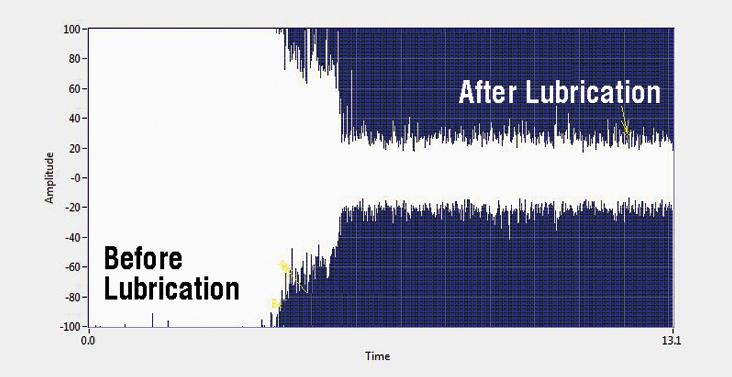One Question to Ask Before Investing in Ultrasonic Equipment

In the past, many plants have implemented interval-based regreasing schedules based on a calendar date or a certain number of operating hours. Though this type of regreasing schedule may seem easier to follow and plan around, it has proven to be suboptimal for bearing health.
More and more plants are shifting toward condition-based lubrication using ultrasonic technology to monitor friction. Some of these systems can directly interface with a grease gun, allowing techs to deposit the appropriate amount of grease based on this friction. Or, if a plant chooses an ultrasonic system with a single point lubricator, the bearings can be lubricated automatically.
If you are considering investing in ultrasonic tools to help you move to condition-based regreasing, there is one question to ask first: should I use manual tools for monitoring and regreasing or automated ones?
Two Ways of Regreasing with Ultrasound Equipment
Manual
Regardless of the ultrasound instrument you use, always calibrate the grease gun. Use a one-ounce container (shot glass), and pump grease into the container using half-strokes while counting the number of strokes it takes to fill it. This resulting count of strokes corresponds to a calibration of the grease gun with the subsequent steps.
For the regreasing method, a common practice is to pump a half-stroke of the grease gun and monitor a response on the analog meter. If the needle on the analog meter moves upward, wait 15 seconds for the needle to return to the original setting or lower before proceeding. If the needle doesn’t move downward or back to the mid-range after 15 seconds, suspend lubricating.
Note: The above procedure is correct if the following regrease volume maximum is not exceeded. Using this formula, calculate the maximum grease charge in ounces:
G = 0.114 x D x B
G = the amount of grease in ounces, D = the outside diameter in inches and B = the bearing width in inches. (If measuring in millimeters and reporting in grams, use a factor of 0.005 instead of 0.114)
Automatic
While a manual regreasing method can be refined, it can never be perfected. For example, consider a bearing that needs to be relubricated with 2 grams of grease. With a standard grease gun, this would mean that the bearing should receive about 1.3 “strokes.” However, manually delivering 0.3 strokes is difficult. So although you are taking strides to reduce bearing failure by developing a condition-based monitoring program, your efforts will be shadowed by potentially over- or under-lubricating your bearings.

If you choose an automatic regreasing method like the OnTrak SmartLube System, the right amount of grease will be dispensed based on decibel levels trended over time. Additionally, this system’s ability to “microdose” through a single point lubricator enables a constant supply of clean, dry grease, eliminating the guesswork and keeping your equipment in shape. By reducing grease usage and minimizing bearing failure (as well as associated downtime) you can achieve significant cost savings and reliability improvements. The system also provides real-time reporting so you can stay informed on the status of your bearings and plan scheduled maintenance more efficiently.
Fostering Condition-Based Success
Moving from an interval-based to a condition-based regreasing schedule takes time and resources, but implementing the right regreasing technology for your plant is easy and can be done as needed, rather than all at once. With that said, acoustic lubrication is not a single solution for lubrication-enabled reliability. It does, however, play a role in the foundation of a world-class lubrication program, an essential component of a successful reliability or maintenance program.